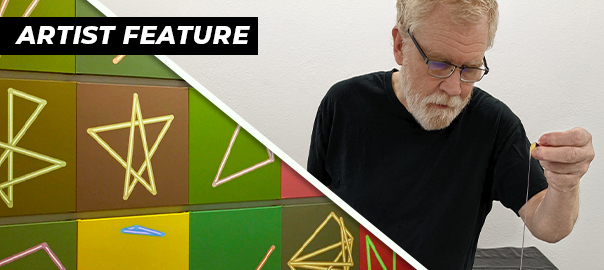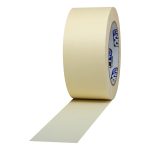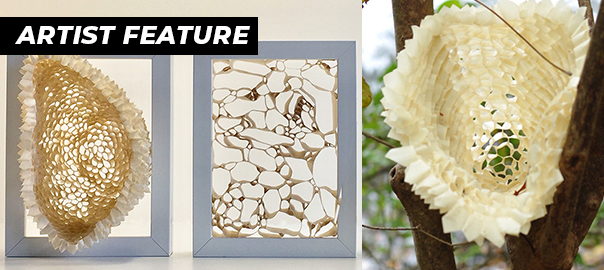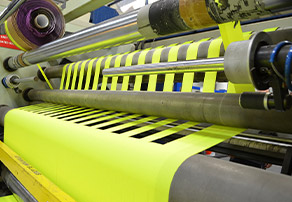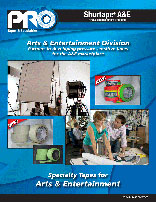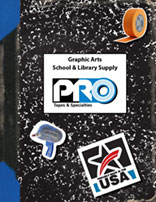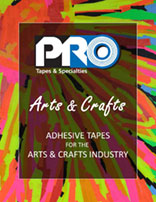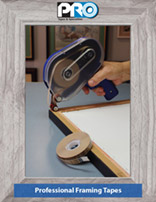Read our interview with Michael Winkler, a contemporary artist in his 70’s who uses Pro 795 masking tape by Pro Tapes to create hard edges during his painting process. Michael’s paintings are part of a multi-media project that explores abstract imagery informed by words and geometric patterns.
Check Michael out on social media:
Website: ww.michaelwinklerart.com
How did you begin working as a contemporary artist?
I never had any plans to be an artist! I was a composer of electronic music.
One night in December of 1980, I was in my room at the Savoy Hotel in Seattle working on an experimental music score involving the alphabet. I discovered a surprising patterning hidden in the letter-sequencing of the words that seemed to reflect their meaning.
The next morning, I had a chance meeting with an art curator, which resulted in my being invited to present a solo exhibition of what I’d discovered.

The exhibition got great reviews and the work sold–I literally became an artist overnight. I’ve been creating art that explores the imagery, as well as the implications, of that discovery ever since.
How did you discover Pro Tapes products?
I began using Pro® 795 in the mid 80’s to create paintings. Creating hard-edge paintings using the tape allowed me to show the overlay of the lines and the dimensionality of the forms.
Pearl Paint was the major art supply store in New York City for many years. Hence, the masking tape I bought there was labeled “Pearl Paint 795.” I didn’t know it was actually a Pro Tapes product until Pearl Paint closed years later!
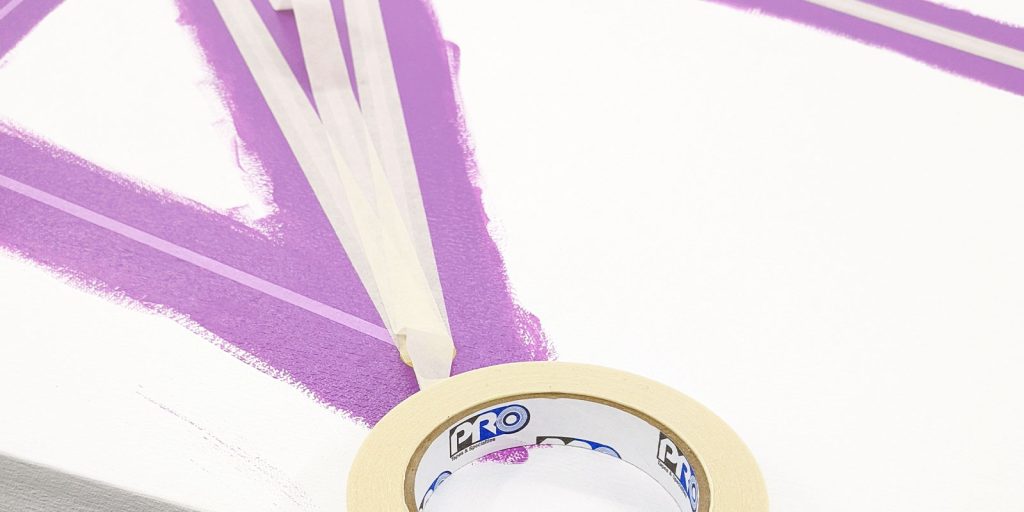
When I bought masking tape at some other stores, I had all sorts of problems with their tape products that I’d never encountered. Eventually, I was looking at one of my leftover rolls of the Pearl Paint 795 and saw that the inside of the roll actually said “Pro Tapes.”
I went searching through all of the art supply stores in New York City for masking tape that had “Pro Tapes” inside the roll.
Finally, I found it at a store next to the School of Visual Arts. Even though it was labeled “Chelsea Tapes 795,” I recognized it as the same high-quality tape I had purchased at Pearl Paint because “Pro Tapes” was printed inside the larger width rolls. I started using it, and it solved all the problems I had been experiencing!
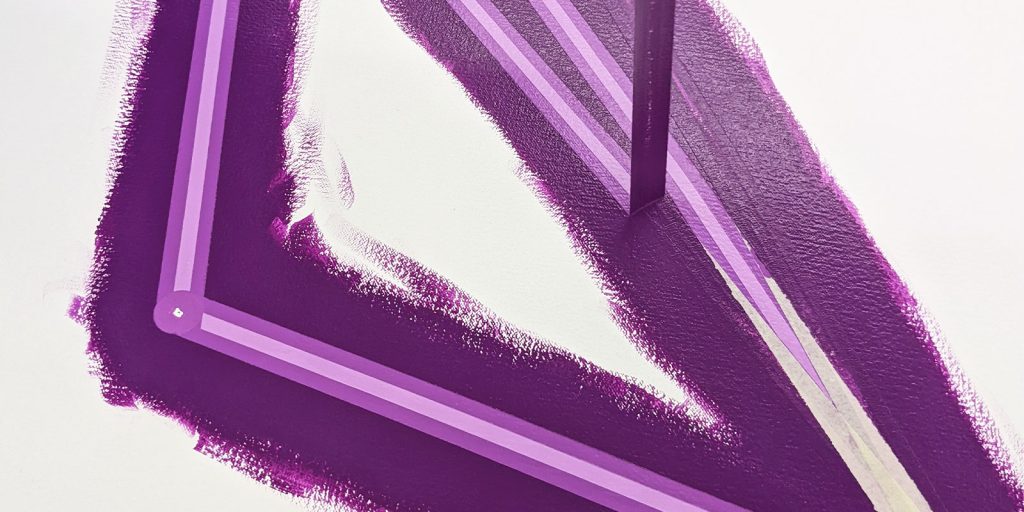
Wow, that’s dedication! Is Pro 795 still your go-to masking tape product? What do you like about it?
Pro Tapes 795 Masking Tape is the only tape I’ve ever found that has all the features necessary to create my hard edge paintings.
My paintings mostly consist of lines of various widths, sometimes as small as 1/8th inch. Conveniently, Pro 795 is available in 1/8″, 1/4″ , 1/2″, 3/4″, 1″, 1 1/2″, 2″, and 3″ widths.
Pro 795 has the perfect amount of adhesion and stretch resistance. Its width is consistent and its edges are never ragged. It never soaks through– and I sometimes apply 4 coats of fluid acrylic paint over it!
With the right painting technique, it produces very clean edges. And when you pull it off, the paint on the back of the tape doesn’t flake off onto your freshly painted work as it does with many other masking tapes.
Tell us about any fun projects you’ve completed recently. What inspired you?
The inspiration for my hard-edge painting technique originally came from looking at the 70’s and 80’s paintings of Al Held (a second generation abstract expressionist who passed away a few years ago).
Subsequently, my art is process-based and originates from a conceptual standpoint. I’ve been practicing it for 43 years. Working in the studio feels much like going to a job I genuinely enjoy.
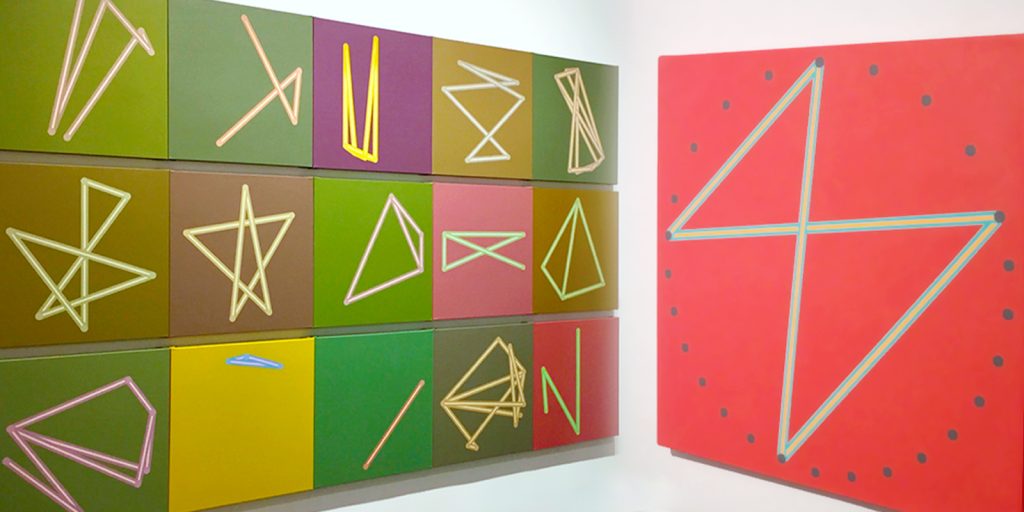
However, there is one thrilling moment in the creation of each painting: It occurs after I’ve painted the background color, and the taped canvas seems to be uniformly colored.
I then peel off the tape and the image gradually emerges line by line from underneath the paint. This reveals the mysterious form that was initially concealed within the language sign patterns, now illuminated in vibrant contrasting colors.
When my daughter was little, she always wanted to be around to watch the magic of the reveal!
What’s next for you? Any upcoming projects or long-term plans?
I’m in my 70’s now. So, I’m primarily focused on trying to ensure that my overall project remains accessible in the future. Examples of my project and documentation are already archived in major museums and universities. Unfortunately, some of my major works were mixed-media installations that don’t lend themselves to being exhibited again in the future.
I began producing paintings early in the project, but they were not my primary focus until recently. The switch in focus was originally motivated by discovering a method of using the signs of language to generate colors. Presently I believe my paintings are the most likely works to be exhibited again when I’m gone (if I can make some really good ones).
Do you have any advice for people that are interested in making art using tape?
To create hard-edge acrylic paintings, make sure the painting’s surface isn’t too rough. It doesn’t have to be extremely smooth–my paintings are normally on #12 canvas (medium smooth).
- I prepare my canvas with 3 coats of slightly thinned acrylic gesso. Let the area of paint you plan to tape over dry overnight first.
- When it’s dry, you can begin placing your tape.
- After you have positioned the tape, seal its edges with either a thin coat of the color under the tape, or a thin coat of matte medium if there are multiple colors under the tape. The paint for this sealing coat should not be watery–I use fluid acrylics with no water added. Brush the sealing coat into the edges of the tape and entirely over it.
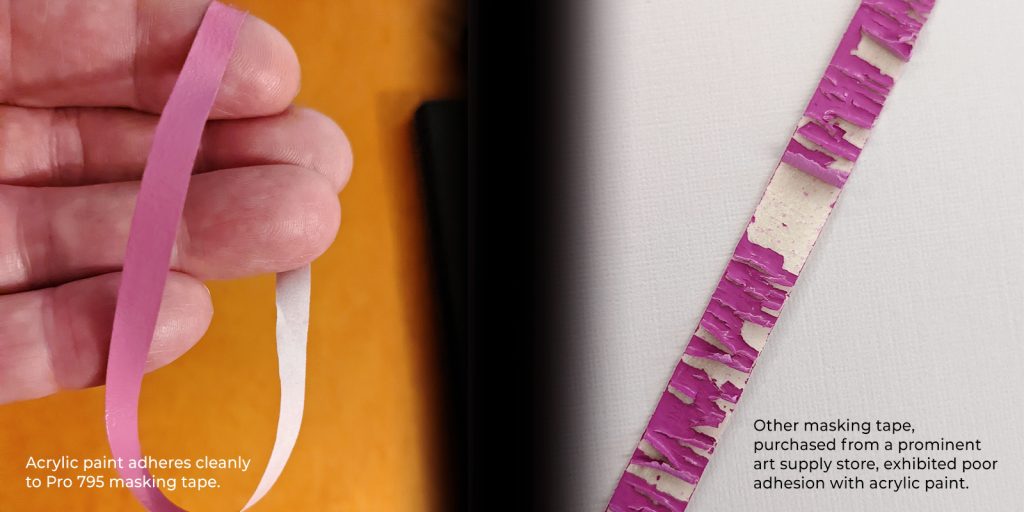
- Allow the sealing coat to dry completely to the touch. But don’t let it dry for too long -definitely avoid letting it dry overnight- because the paint/medium will adhere the tape to the painting.
- Apply multiple coats when the previous one is just dry enough for painting over. Remove the tape as soon as the paint becomes tacky on the final coat.
- To avoid touching the tacky surface of the painting when removing your tape, use a pointed razor knife to lift the end of the tape if it’s covered in paint. Finally, pull the tape off at a 45 degree angle from the painting’s surface.
- If any inconsistencies in the canvas surface have created spots where the paint has leaked past the sealing coat on the edges, it’s actually quite easy to touch up. The pulled tape leaves a raised edge, which you can just drag a small brush against until it looks fixed.
These suggestions are all based on using Pro Tapes 795 masking tape – I hope they help!

